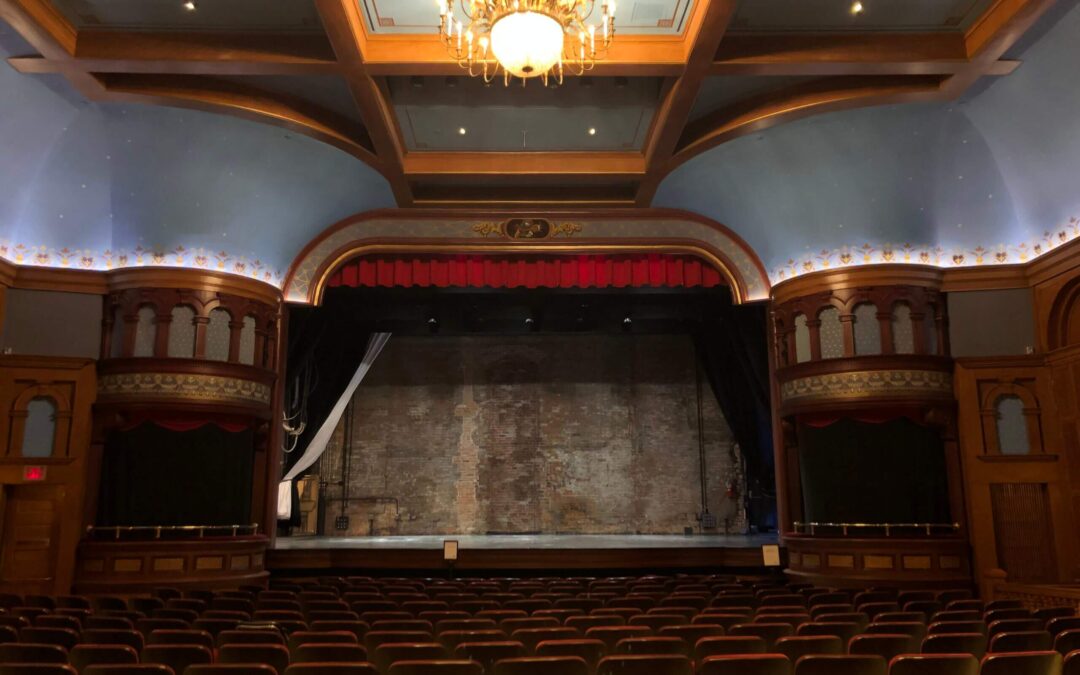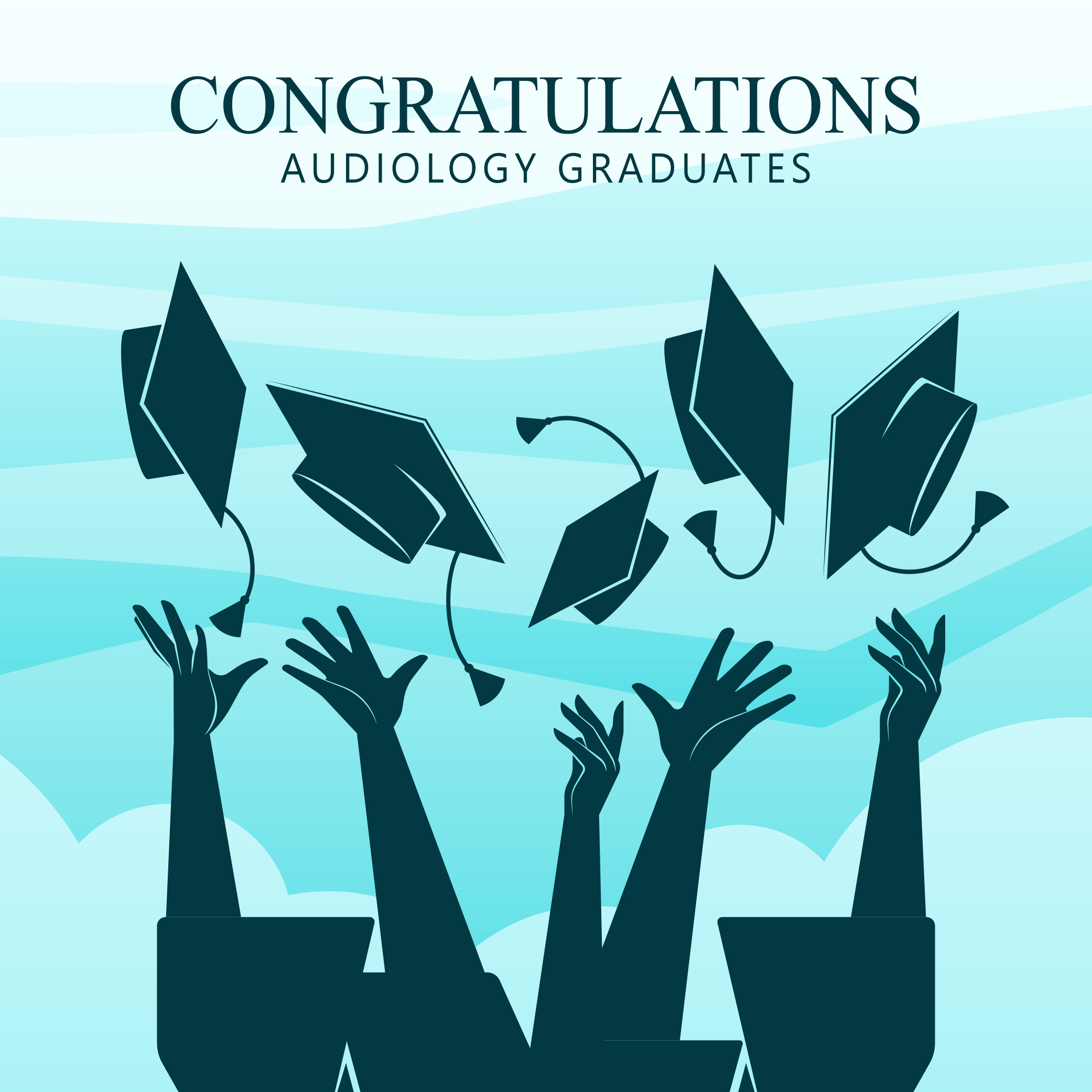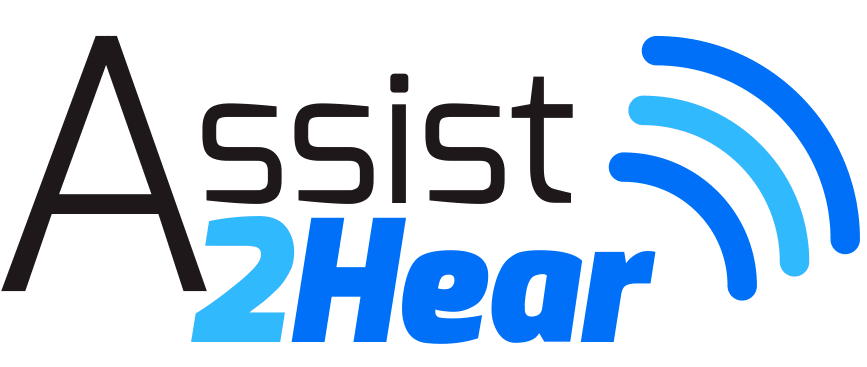
Jul 20, 2021 | Blog, Colorado Hearing Loops, News, Updates
Historic Wheeler Opera House in Aspen, Colorado Installs Hearing Loop System
Assist2hear is excited to announce the final completion of another new Colorado hearing loop installation at the Wheeler Opera House in Aspen, Colorado. The installation includes hearing loops in both the orchestra and balcony of the historic Aspen music venue. The décor of the theater now consists of new, lush, carpet in the aisles and original flooring within the seating area of the orchestra, and full carpet in the balcony. The hearing loop design for both segments is a phased array system.
A huge part of hearing loop installation in theaters is maintaining the integrity of a venue’s décor, particularly when working with a historic theater. The Wheeler Opera House opened its doors to the Aspen community in 1889, making it 132-years old today. The necessity for a phased array installation in historic venues such as this requires the experience and custom finishing expertise that only Assist2Hear brings to the table, with over ten years of Contacta field-certified hearing loop installation
Phased arrays hearing loop systems ensure a uniform sound for all users, regardless of seating location. They are a best practice for large theaters due to key factors such as size and rise of seating. The Wheeler Opera House required a phased array design in its orchestra because of the large size and the in the balcony primarily because of its rise. Theater patrons will have to look hard to find any indication of wires, as they are well hid either underneath carpet or seats “disguised as a shadow”.
What does “disguised as a shadow” look like? We hope you will go, enjoy the theater’s new hearing loop, and see for yourself. The Wheeler Opera House reopens its doors to the Aspen Community for the Aspen Music Festival taking place July 1st through August 22nd. For more upcoming events at which to enjoy the Wheeler’s new hearing loop, visit AspenShowTix.com.

Jun 21, 2021 | Preventing Hearing Loss
Fireworks are fun but the can also cause hearing loss.
As the 4th of July approaches, plans for fireworks and festivities abound. Even though a huge part of the fun of fireworks is their explosion and the sound it makes, it is incredibly important to take safety precautions when setting them off. Fireworks, as well as other loud noises, can be extremely dangerous to one’s hearing. If not carefully enjoyed, fireworks can cause hearing loss that will last a lifetime. The good news is that with two simple considerations, you can prevent hearing loss this 4th of July.
Distance
The closer you are to the fireworks display, the louder it is going to be. While it is fun to where the action is, it is also important to remain a safe distance from fireworks to minimize the sound and potential for damage to hearing. According to the World Health Organization, a safe distance from fireworks for an adult is approximately 30 to 45 feet. Be careful though because the safe distance for children is much higher; children need to be at least 150-180 feet away to minimize the possibility of hearing damage due to fireworks. To put that into perspective, 94 feet is the length of an NBA-size basketball court.
Wear Ear Protection
Explosive sounds, like firecrackers, are even more hazardous to your hearing than other loud noises. When igniting fireworks, it is incredibly important to wear ear protection. A variety of ear protection options exist, from cheap foam earplugs available at the gas station to midrange and high-end noise-canceling headphones. Headphones on their own are generally not recommended unless they cover the ears in their entirety. If noise-canceling functionality is not available, it is recommended to use a foam earplug, in addition to the headset. Oh – and we forgot to mention using one’s noise-canceling Airpods works great too!
Resources for Hearing Loss
If you need help due to a hearing loss incident with fireworks or are simply experiencing hearing loss in general, there are places that can help. A simple Google search can locate a local audiologist who can provide a hearing test to quantify how much hearing loss is present and what to do next. In many cities, there are chapters of the Hearing Loss Association of America (https://www.hearingloss.org), which can connect people with hearing loss to local resources, as well as provide a wealth of information and support for people experiencing hearing loss.
Don’t let accidental over-exposure to fireworks on the 4th of July affect you or your child’s ability to hear normally for the rest of their life. Have fun, but be safe!

Jun 16, 2021 | Blog
Congratulations! You have studied and done the work. Now you’re ready to make a difference.
And the hearing loss world is ready for your help because we have some big problems.
The hearing loss epidemic is growing and not enough people are paying attention. The fact is that many people are still embarrassed of their hearing loss. It still takes most people an average of seven years to admit the problem and visit an audiologist. Every third person over the age of 65 who attended your graduation struggled to understand the speeches because of a lack of hearing access, but most likely won’t complain!!
Hearing loss is an invisible disability. That’s where you come in.
First Stop: Hearing Loss Association
I hope that one of your first decisions is to join your local Hearing Loss Association of America. Then get your friends and family to join. And eventually your patients. Before you know it, your local HLAA has a much stronger voice and helps the city become more hearing-friendly and inclusive. We have to start locally to fix this national problem.
Second: Post It
Build your professional social media accounts right away and find your voice. Make sure everyone you love knows what you do for a living and to reach out to you if they or anyone they know is having trouble hearing. Let this not just be your career, let this be your passion.
Third: Make a Plan
Try to choose a goal project for your first year. To get you started here are a few ideas.
• Raise funds for a theater hearing loop.
• Develop a great PowerPoint and offer a free Hearing Loss presentation for local companies.
• Host a “Quiet Dinner Night” at a local restaurant.
• Help teach hearing loss prevention at local elementary and high schools.
• Make an appointment with your state representatives to discuss the importance of hearing access in public spaces.
• Become an “Audiology Adviser” for your HLAA to answer basic questions for members before and after each meeting.
• Develop a national hashtag.
Congratulations again, audiology graduates and good luck! You can help remove the national stigma of hearing loss with your ideas and plans.
In the wise words of Arthur Ashe, I encourage you to “Start where you are. Use what you have. Do what you can.”

Jul 2, 2018 | Blog
One afternoon, while my parents were gone to a doctor’s appointment, a friend and I installed a home hearing loop in my parent’s living room. In less than 30 minutes, we crawled around the living room, tucking the thin wire under the baseboards. The wire ends connected easily to a small hearing loop amplifier which connected to the television.
I often hear “negatives” about television. Too much television usually means not enough physical activity, laziness, or wasting time. But in my father’s case, television is his happy place.
My father’s life consisted of kissing my mother goodbye in the morning and zooming around Oklahoma City. He was a chaplain for Integris Medical Center and Mercy Hospital. He was also a deacon to Holy Angels Catholic Church in Oklahoma City. His spare time was filled with family and hunting for his next hobby; he barely sat still. Unfortunately, he had a massive stroke in December 2015 and it changed everyone’s life.
As a stroke survivor, his day is a little slower now and revolves around doctors’ appointments and a lot of rest.
After becoming one of his main caregivers, I started to understand what a big impact hearing loss has in his every day life. At first, I encouraged him to get out of the house with me. I encouraged him to try movies, book readings, and special presentations throughout the city. For months we tried similar outings and every event had a similar outcome:
“What did you think about the [insert activity]?” And he would shrug shoulders and just say “I couldn’t really hear it.”
Even when we went to his favorite restaurant, I could tell he was there just to eat; he definitely wasn’t there to have a conversation with us because he couldn’t understand our words over the normal commotion of a restaurant atmosphere.
His hearing loss encourages him to stay home. At least at home, he could turn the TV up as loud as he wanted to watch a church service and actually hear the sermon. He could be transported to downtown City Hall and make sense of City Council meetings. He could learn all about the famous artists visiting the museum without having to leave his living room.
But the television volume was driving us all crazy, especially my sweet mother. About the time my mother was about to throw the television out the front door, I introduced them to a residential hearing loop.
One afternoon, while my parents were gone to a doctor’s appointment, a friend and I installed a home hearing loop in my parent’s living room. In less than 30 minutes, we crawled around the living room, tucking the thin wire under the baseboards. The wire ends connected easily to a small hearing loop amplifier which connected to the television.
I had previously made sure the Telecoil or T-coil was activated in both of my parent’s hearing aids. I knew they were hearing loop ready!
My dad loves watching cooking shows after therapy sessions so that he will have “sweet dreams” during his nap. I had turned the volume down significantly and his first reaction was to grab the remote and turn up the volume to 742. But instead, I asked them to switch the programs in their hearing aids to a T-coil mode.
As soon as the Telecoil program mode was turned on, he and my mother looked straight at each other with wide eyes to confirm what they were hearing. Instead of the television being at volume 50 (or 742!), the television volume was extremely low. They realized they could hear PERFECTLY and at the PERFECT volume through their hearing aids even though the TV was basically muted. My mother started laughing and my father looked at me like I had bought him the best Father’s Day gift ever.
I explained how hearing loop technology worked. In basic terms, a thin wire is laid around the room and connected to an amplifier and a sound source- in this case the television. The signal from the television travels through the hearing loop amplifier and loop wire, creating an electro-magnetic field. The telecoil inside of most hearing aids and hearing devices, works as an antenna to pick up the signal. The clear sound is delivered straight to the hearing device!
Hearing loop technology has been around for over 30 years and it is used around the world to help individuals live well with hearing loss. Television hearing loops help my father relax and enjoy his favorite shows instead of struggling to make sense of the dialogue. Some people struggle with low frequency sounds like vowels, while others struggle with high frequency sounds like consonants. Just imagine trying to make sense of a sentence without the vowels. Could you do it?
Hrng Lps rlly hlp n th hm and cmmnt. Hrng lp tchnlg hlps brng clr snd strght t yr hrng dvc!
(Home hearing loops really help in the home and community. Hearing loop technology helps bring clear sound straight to your hearing device!)
Assist2Hear proudly offers a hearing loop solution in our Home Hearing Loop Kit. The residential hearing loop kit can be purchased as a room loop which includes the amplifier, power supply, 100’ of 20 gauge wire, TV patch cords (RCA), self-install instructions. A hearing loop chair pad is also available which can be used under a chair or sofa. The loop pad works for the single user, while the room kit works for many people. Professional installation is available in select cities for an additional charge.
My father won’t enjoy his day without his Television Home Loop and would like one in every room- including the kitchen! Residential hearing loops really help!

Jun 4, 2018 | Blog
When my mother was taken to the emergency room on Wednesday afternoon, her only concern was to be home by Friday. She was determined to attend her granddaughter’s graduation. Fortunately, she was able to go home on Thursday and made it to the graduation with a day to spare. Unfortunately, she couldn’t hear a thing.
My father and mother both live with hearing loss. My niece was among the first to receive her diploma because she graduated with honors. As soon as the ceremony began, I was instantly disappointed. I was disappointed because I realized that if I couldn’t understand the words because of the echo, reverberation, and distance, then I knew my parents couldn’t understand a word.
My father and mother both live with severe hearing loss, as mine is only mild; yet feels pretty severe and affects my daily life. My parents both have wonderful hearing aids which generally help in small settings, but they still struggle in large spaces like churches, theaters, and stadiums. We were even seated on the front row of the physically disabled section which was on the football field instead of in the stands. I knew the venue did not have a hearing loop, but instead they had a type of hearing assistive technology which required headsets. Headsets are usually not an option for many people with hearing aids or Cochlear implants.
My parents couldn’t understand the blessing or the multiple valedictorian speeches. My dad is sadly used to mumbled graduation ceremonies, but my mom struggled and strained to listen. My niece was the 7th child to graduate. As soon as she crossed the stage, my mother said, “Did she already go? Did they call her name?” My heart sunk because she had worked extra hard to put on a brave face so that she could leave the hospital to make it to her granddaughter’s gradual did not get to hear the most special part of a graduation for a family member. It wasn’t fair that my parents then had to listen to the mumble of 347 other children’s names and the farewell from the commencement speaker. They did not have the feeling of pride that everyone else got to feel.
School administrators need to understand that the graduate’s brief moment in the sun means a lot to family members. Grandparents, parents, and friends of the graduates who live and suffer with hearing loss deserve an easy fix called a hearing loop.
A hearing loop also known as an audio induction loop system, creates a magnetic field which cooperates with hearing aids to eliminate distance from the microphone, as well as background noise and echo. In other words, the hearing aid or hearing device becomes a personal loudspeaker. My mother said that a hearing loop “feels like a private conversation between me and the speaker.”
The ADA requires public spaces to offer hearing assistance in spaces where hearing is integral to the use of that space. What does this mean? It means that if you have a large area and you expect people to hear what you want to say through a sound system, then you must have one of three ADA compliant systems for hearing accessibility. Hearing loops are
We wouldn’t think twice about wheelchair access because we understand it and we can see it. Hearing loss is an invisible disability which affects more people then heart disease or diabetes. Hearing Loops Help.
Apr 11, 2018 | Blog, Research
Hearing loops in library systems are an essential part of reducing barriers to services for library patrons. Without hearing loops in library systems, persons living with hearing loss can find library services difficult or embarrassing to utilize.
What is the first rule of thumb in a library? Be quiet! Now imagine having hearing loss and attempting to communicate in a library. Perhaps you are at the information desk and you asking where a specific book is located. The librarian will provide detailed instructions, in a soft tone, because that’s what you do in a library – talk quietly. Unfortunately speaking softly makes for an incredibly challenging situation for persons living with hearing loss. In the library, a conversation in an elevated volume brings disapproving eyes and a “shhhhh!”
Hearing loops in library systems are an essential part of reducing barriers to services for library patrons. Without hearing loops in library systems, persons living with hearing loss can find library services difficult or embarrassing to utilize. The information desk is just one of many locations where hearing loops can help users hear better in libraries. Library hearing loop systems should be present in a variety of forms, such as large area hearing loop systems in public meeting rooms and small area loop systems, such as counter loops at information desks.
One of the most common locations for hearing loops in a library is the community or meeting room. Most libraries have meeting room(s) that are available to the public for use to host or engage in seminars, trainings, and even government functions, such as such as city council meetings. Most of these rooms also have a microphone and/or audio-visual system in them, which means they are also legally required to offer hearing assistive technology to users to meet ADA regulations related to access for persons with hearing loss. In new libraries, hearing loops are becoming the standard hearing assistive technology offered because of the high level of user-satisfaction and the ability for patrons to use the system without the librarian or library workers having to maintain and checkout additional equipment.
It is essential for librarians and library workers to assess their local library resources to make sure that hearing assistive technology is present for the community. A counter hearing loop is a very cost-effective way to help persons with hearing loss access the basic services of the library. If a large area hearing loop is not in the library budget now, a lower cost system such as FM or IR may be a short-term solution to ensure compliance with the ADA and make sure that all library patrons can access services, such as use of the community room.
Assist2Hear has installed hearing loops in many library systems. In the Front Range of Colorado, these hearing loop locations include:
For more information about what it takes to install a hearing loop in your local library, give Assist2Hear a call today! We offer the free site assessments for hearing loop systems and can also provide you with a demonstration counter loop to test at the information desk or other point of service. Additionally, Assist2Hear also offers training resources to library staff about hearing loss and how to effectively communicate with persons with hearing loss.





